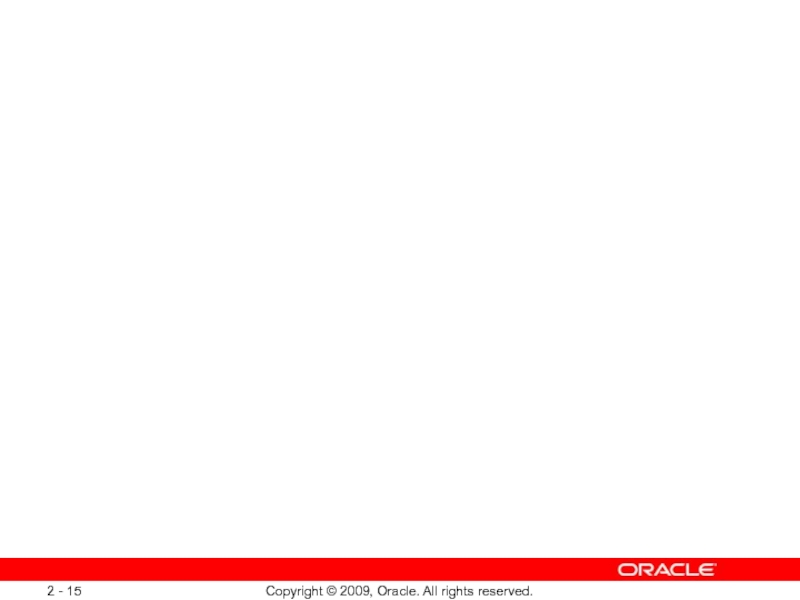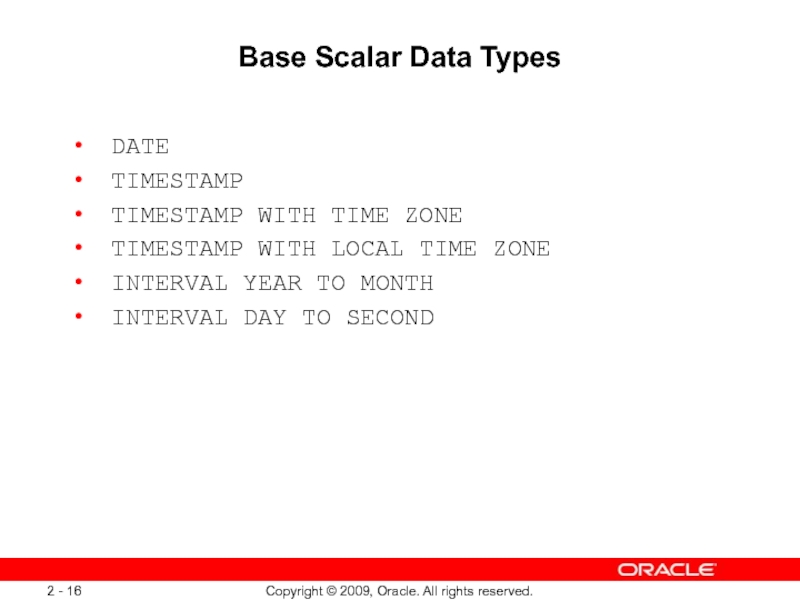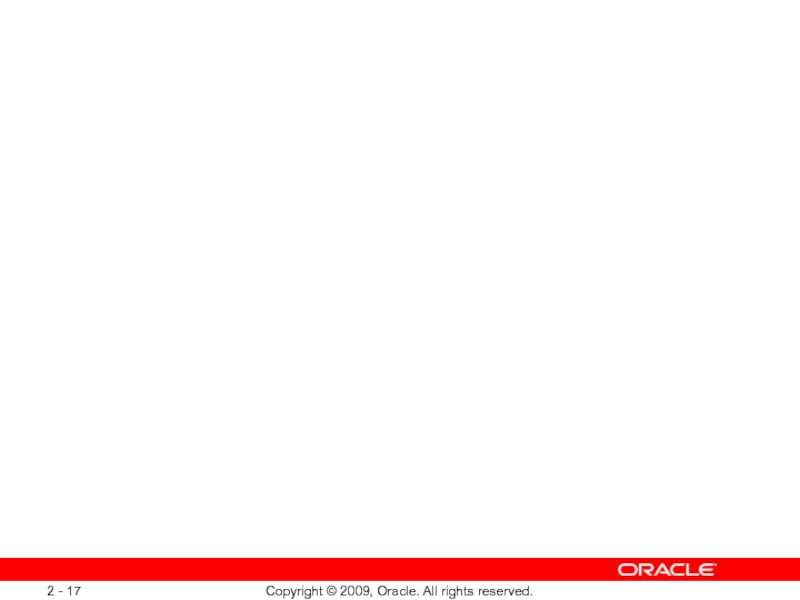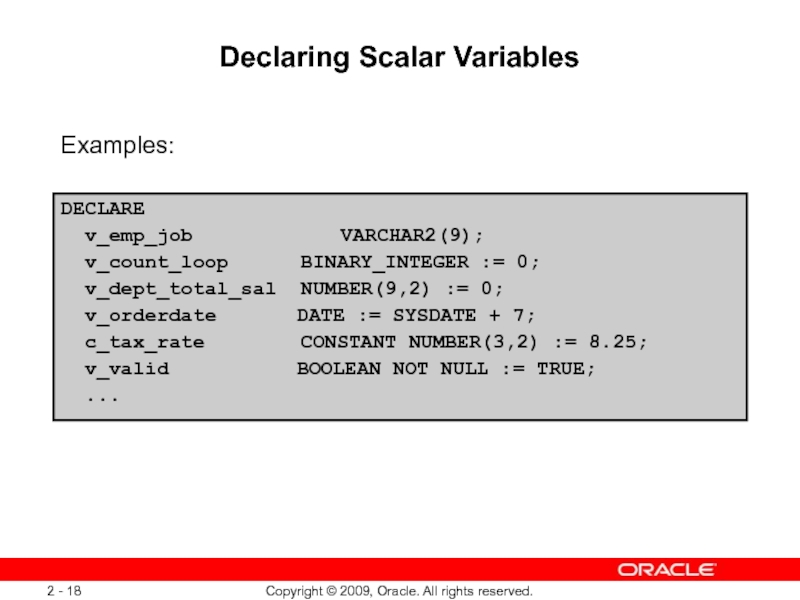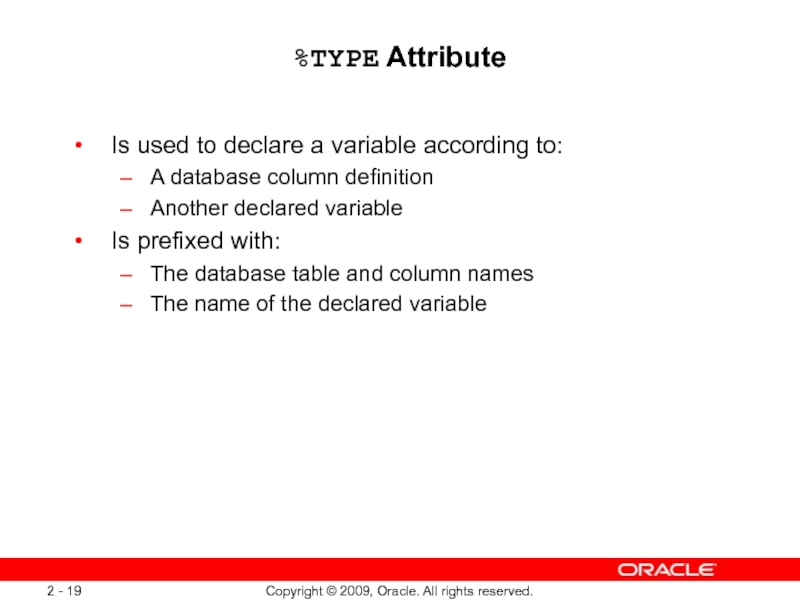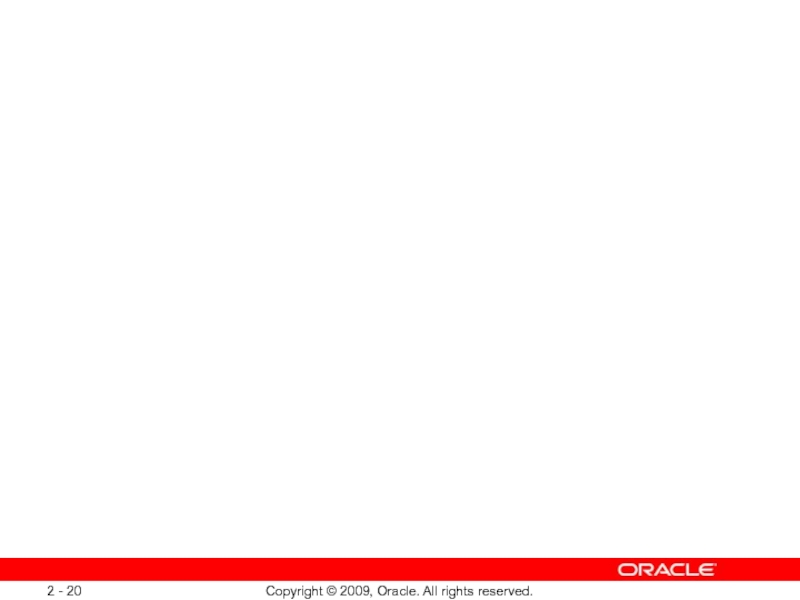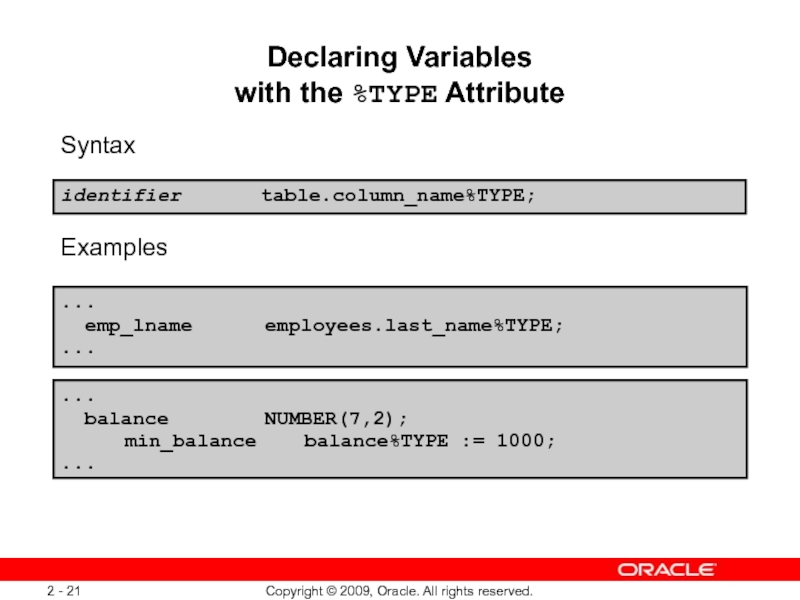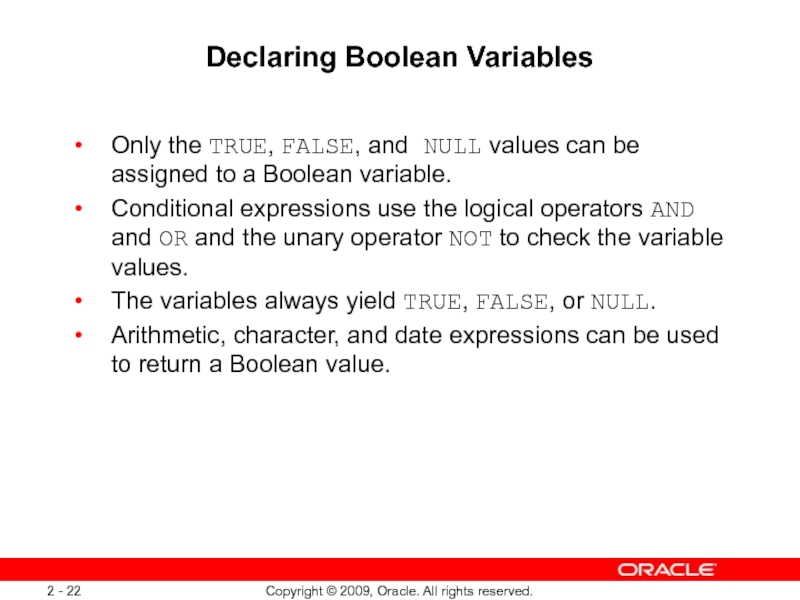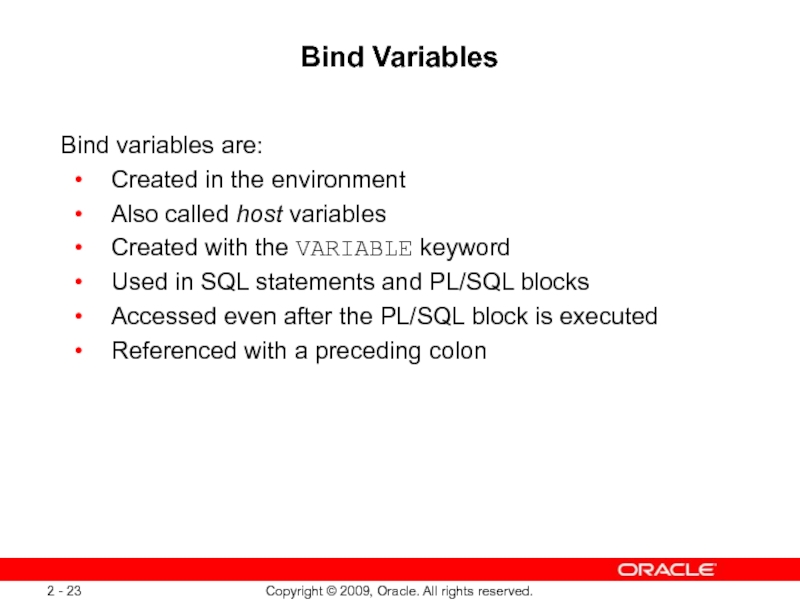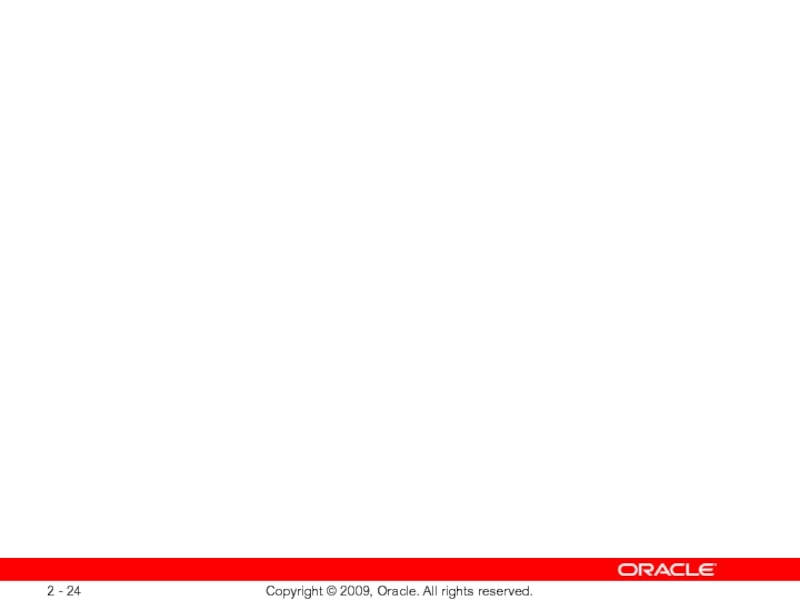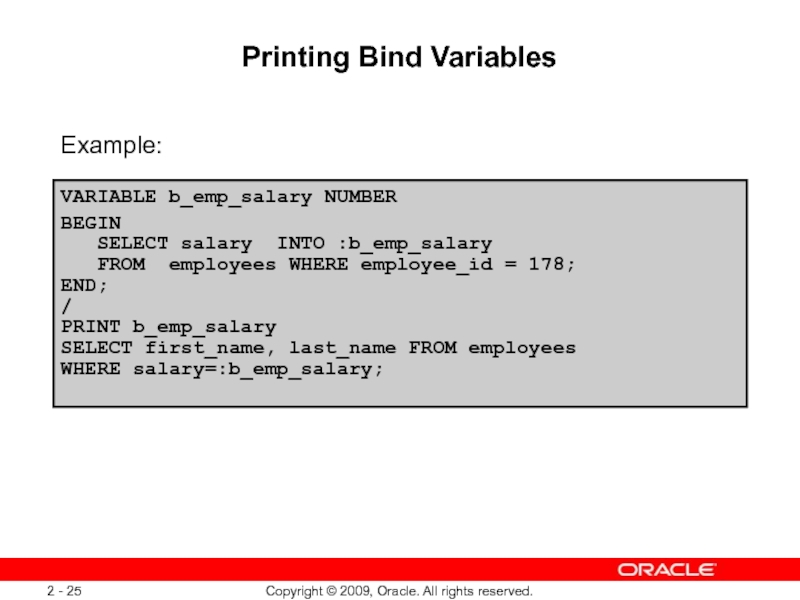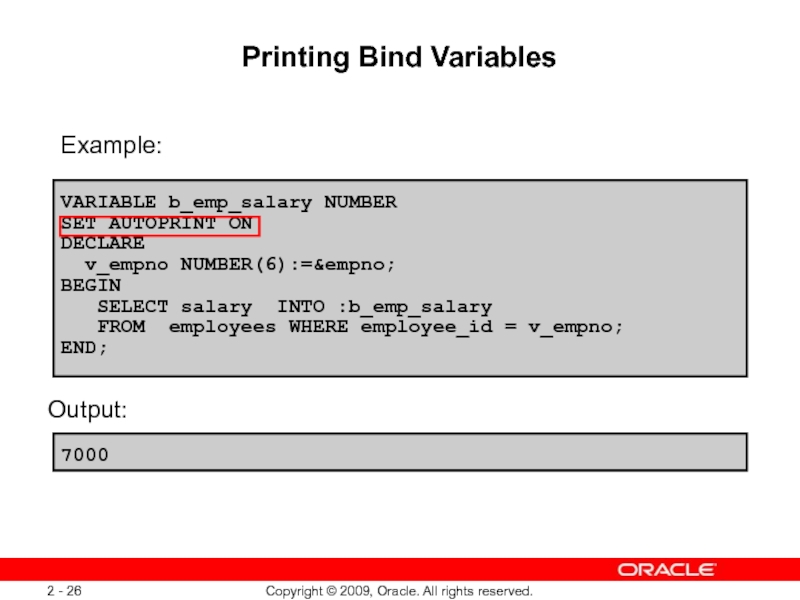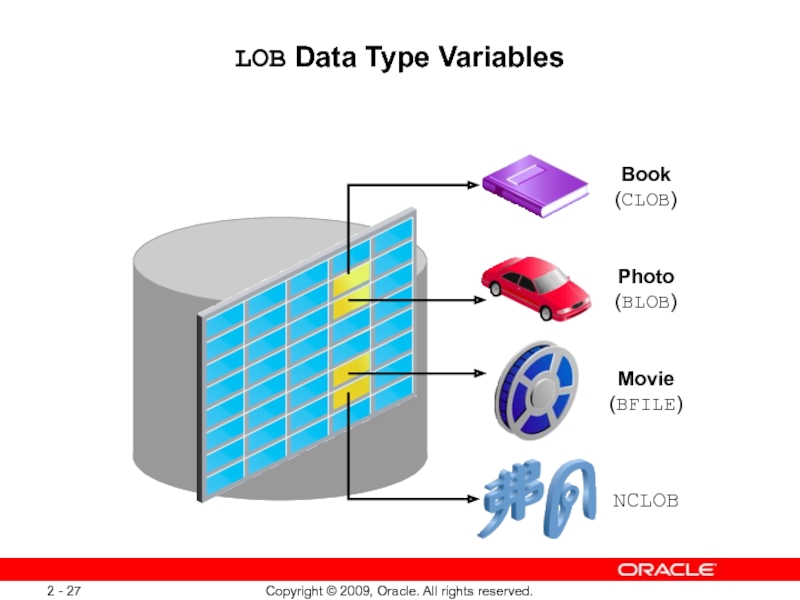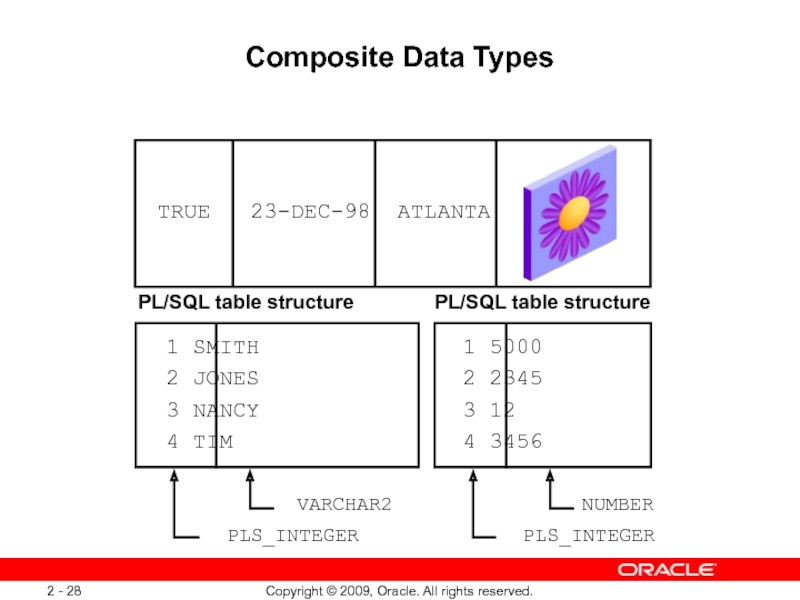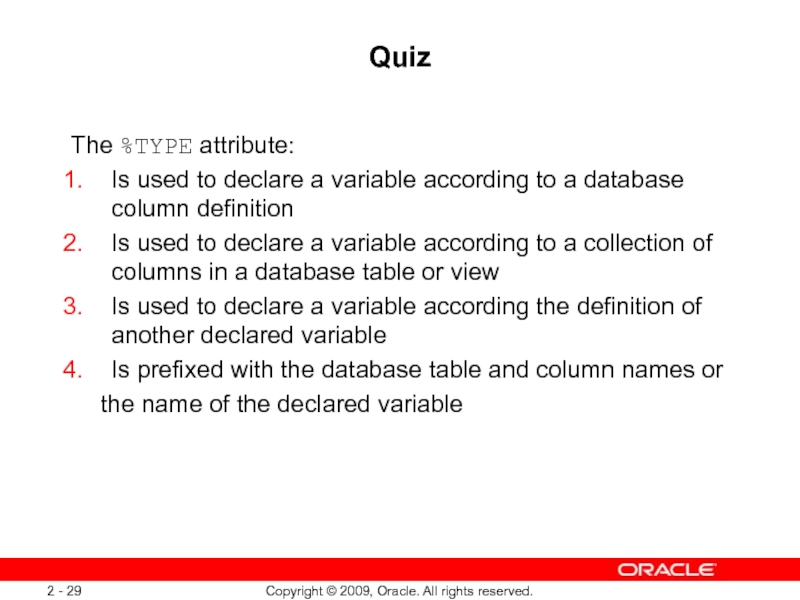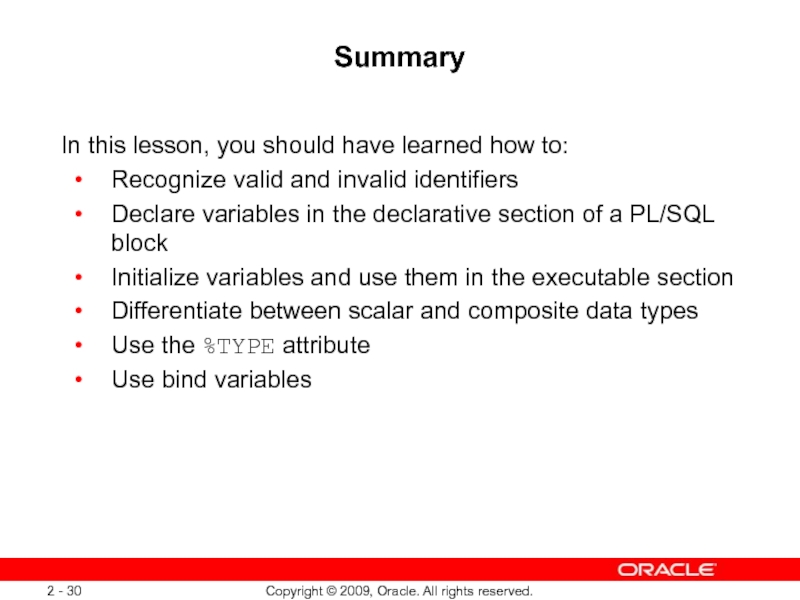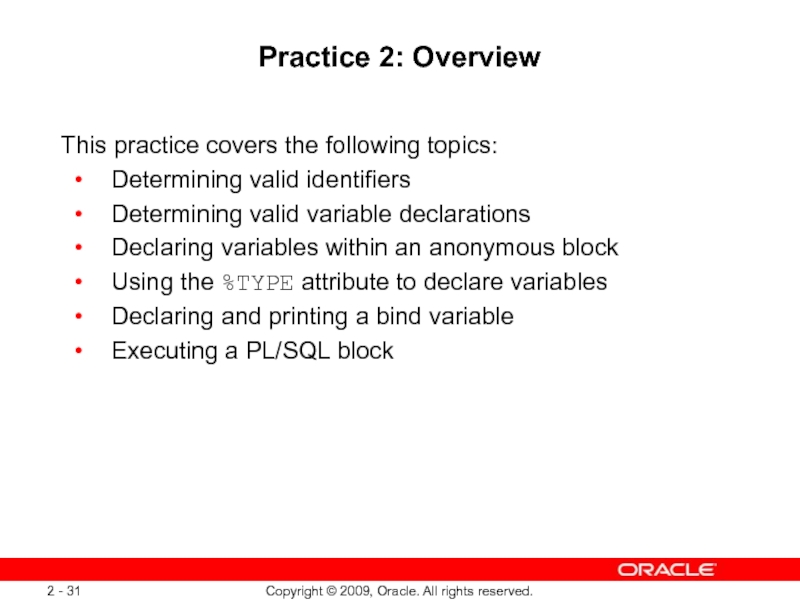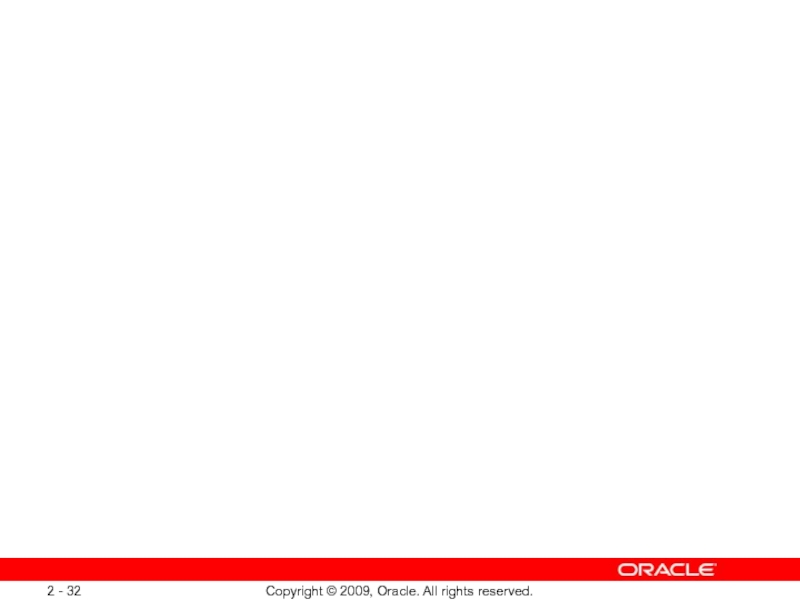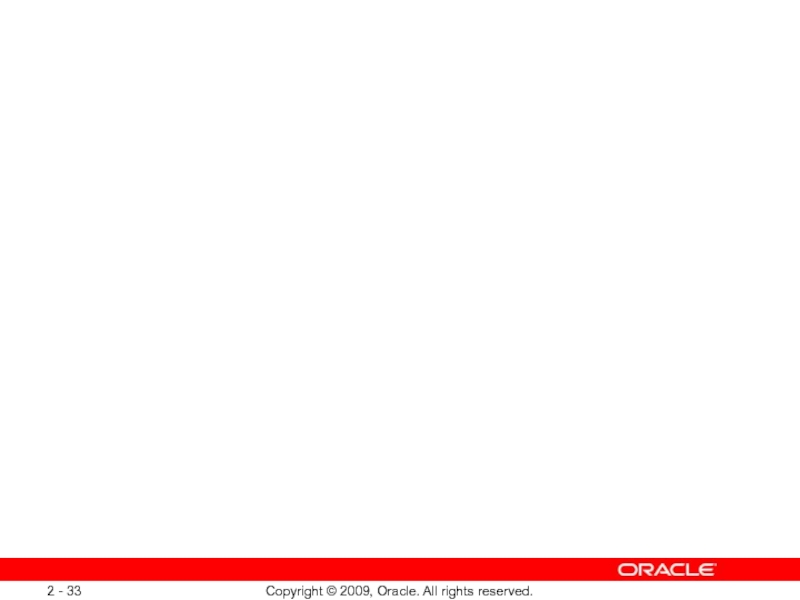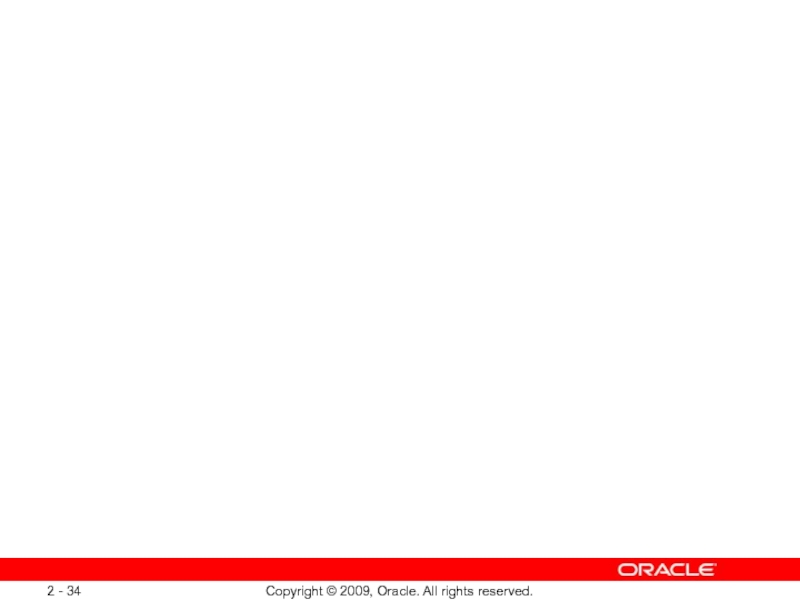- Главная
- Разное
- Дизайн
- Бизнес и предпринимательство
- Аналитика
- Образование
- Развлечения
- Красота и здоровье
- Финансы
- Государство
- Путешествия
- Спорт
- Недвижимость
- Армия
- Графика
- Культурология
- Еда и кулинария
- Лингвистика
- Английский язык
- Астрономия
- Алгебра
- Биология
- География
- Детские презентации
- Информатика
- История
- Литература
- Маркетинг
- Математика
- Медицина
- Менеджмент
- Музыка
- МХК
- Немецкий язык
- ОБЖ
- Обществознание
- Окружающий мир
- Педагогика
- Русский язык
- Технология
- Физика
- Философия
- Химия
- Шаблоны, картинки для презентаций
- Экология
- Экономика
- Юриспруденция
Declaring PL/SQL Variables. (Lecture 2) презентация
Содержание
- 1. Declaring PL/SQL Variables. (Lecture 2)
- 2. Objectives After completing this lesson, you should
- 3. Use of Variables Variables can be used
- 4. Requirements for Variable Names A variable name:
- 5. Handling Variables in PL/SQL Variables are: Declared
- 6. Declaring and Initializing PL/SQL Variables Syntax:
- 7. Declaring and Initializing PL/SQL Variables DECLARE
- 8. Delimiters in String Literals DECLARE
- 9. Types of Variables PL/SQL variables: Scalar Composite Reference Large object (LOB) Non-PL/SQL variables: Bind variables
- 10. Types of Variables
- 11. Guidelines for Declaring and Initializing PL/SQL Variables
- 12. Guidelines for Declaring PL/SQL Variables Avoid using
- 13. Scalar Data Types Hold a single value Have no internal components
- 14. Base Scalar Data Types CHAR [(maximum_length)] VARCHAR2
- 16. Base Scalar Data Types DATE TIMESTAMP TIMESTAMP
- 18. Declaring Scalar Variables Examples: DECLARE
- 19. %TYPE Attribute Is used to declare a
- 21. Declaring Variables with the %TYPE Attribute
- 22. Declaring Boolean Variables Only the TRUE, FALSE,
- 23. Bind Variables Bind variables are: Created in
- 25. Printing Bind Variables Example: VARIABLE b_emp_salary NUMBER
- 26. Printing Bind Variables Example: VARIABLE b_emp_salary
- 27. LOB Data Type Variables Book (CLOB) Photo (BLOB) Movie (BFILE) NCLOB
- 28. Composite Data Types
- 29. Quiz The %TYPE attribute: Is used
- 30. Summary In this lesson, you should have
- 31. Practice 2: Overview This practice covers the
Слайд 2Objectives
After completing this lesson, you should be able to do the
Recognize valid and invalid identifiers
List the uses of variables
Declare and initialize variables
List and describe various data types
Identify the benefits of using the %TYPE attribute
Declare, use, and print bind variables
Слайд 3Use of Variables
Variables can be used for:
Temporary storage of data
Manipulation of
Reusability
Слайд 4Requirements for Variable Names
A variable name:
Must start with a letter
Can
Can include special characters (such as $, _, and # )
Must contain no more than 30 characters
Must not include reserved words
Слайд 5Handling Variables in PL/SQL
Variables are:
Declared and initialized in the declarative section
Used
Passed as parameters to PL/SQL subprograms
Used to hold the output of a PL/SQL subprogram
Слайд 6Declaring and Initializing PL/SQL Variables
Syntax:
Examples:
identifier [CONSTANT] datatype [NOT NULL]
[:=
DECLARE
v_hiredate DATE;
v_deptno NUMBER(2) NOT NULL := 10;
v_location VARCHAR2(13) := 'Atlanta';
c_comm CONSTANT NUMBER := 1400;
Слайд 7Declaring and Initializing PL/SQL Variables
DECLARE
v_myName VARCHAR2(20);
BEGIN
DBMS_OUTPUT.PUT_LINE('My name is: '||
v_myName := 'John';
DBMS_OUTPUT.PUT_LINE('My name is: '|| v_myName);
END;
/
DECLARE
v_myName VARCHAR2(20):= 'John';
BEGIN
v_myName := 'Steven';
DBMS_OUTPUT.PUT_LINE('My name is: '|| v_myName);
END;
/
1
2
Слайд 8Delimiters in String Literals
DECLARE
v_event VARCHAR2(15);
BEGIN
v_event := q'!Father's
DBMS_OUTPUT.PUT_LINE('3rd Sunday in June is :
'|| v_event );
v_event := q'[Mother's day]';
DBMS_OUTPUT.PUT_LINE('2nd Sunday in May is :
'|| v_event );
END;
/
Слайд 9Types of Variables
PL/SQL variables:
Scalar
Composite
Reference
Large object (LOB)
Non-PL/SQL variables: Bind variables
Слайд 11Guidelines for Declaring and Initializing
PL/SQL Variables
Follow naming conventions.
Use meaningful identifiers for
Initialize variables designated as NOT NULL and CONSTANT.
Initialize variables with the assignment operator (:=) or the DEFAULT keyword:
Declare one identifier per line for better readability and code maintenance.
v_myName VARCHAR2(20):='John';
v_myName VARCHAR2(20) DEFAULT 'John';
Слайд 12Guidelines for Declaring PL/SQL Variables
Avoid using column names as identifiers.
Use the
DECLARE
employee_id NUMBER(6);
BEGIN
SELECT employee_id
INTO employee_id
FROM employees
WHERE last_name = 'Kochhar';
END;
/
Слайд 14Base Scalar Data Types
CHAR [(maximum_length)]
VARCHAR2 (maximum_length)
NUMBER [(precision, scale)]
BINARY_INTEGER
PLS_INTEGER
BOOLEAN
BINARY_FLOAT
BINARY_DOUBLE
Слайд 16Base Scalar Data Types
DATE
TIMESTAMP
TIMESTAMP WITH TIME ZONE
TIMESTAMP WITH LOCAL TIME ZONE
INTERVAL
INTERVAL DAY TO SECOND
Слайд 18Declaring Scalar Variables
Examples:
DECLARE
v_emp_job VARCHAR2(9);
v_count_loop BINARY_INTEGER := 0;
v_dept_total_sal NUMBER(9,2)
v_orderdate DATE := SYSDATE + 7;
c_tax_rate CONSTANT NUMBER(3,2) := 8.25;
v_valid BOOLEAN NOT NULL := TRUE;
...
Слайд 19%TYPE Attribute
Is used to declare a variable according to:
A database
Another declared variable
Is prefixed with:
The database table and column names
The name of the declared variable
Слайд 21Declaring Variables
with the %TYPE Attribute
Syntax
Examples
...
emp_lname employees.last_name%TYPE;
...
identifier table.column_name%TYPE;
...
balance
min_balance balance%TYPE := 1000;
...
Слайд 22Declaring Boolean Variables
Only the TRUE, FALSE, and NULL values can be
Conditional expressions use the logical operators AND and OR and the unary operator NOT to check the variable values.
The variables always yield TRUE, FALSE, or NULL.
Arithmetic, character, and date expressions can be used to return a Boolean value.
Слайд 23Bind Variables
Bind variables are:
Created in the environment
Also called host variables
Created
Used in SQL statements and PL/SQL blocks
Accessed even after the PL/SQL block is executed
Referenced with a preceding colon
Слайд 25Printing Bind Variables
Example:
VARIABLE b_emp_salary NUMBER
BEGIN
SELECT salary INTO :b_emp_salary
END;
/
PRINT b_emp_salary
SELECT first_name, last_name FROM employees
WHERE salary=:b_emp_salary;
Слайд 26Printing Bind Variables
Example:
VARIABLE b_emp_salary NUMBER
SET AUTOPRINT ON
DECLARE
v_empno NUMBER(6):=&empno;
BEGIN
SELECT
FROM employees WHERE employee_id = v_empno;
END;
7000
Output:
Слайд 29Quiz
The %TYPE attribute:
Is used to declare a variable according to
Is used to declare a variable according to a collection of columns in a database table or view
Is used to declare a variable according the definition of another declared variable
Is prefixed with the database table and column names or
the name of the declared variable
Слайд 30Summary
In this lesson, you should have learned how to:
Recognize valid
Declare variables in the declarative section of a PL/SQL block
Initialize variables and use them in the executable section
Differentiate between scalar and composite data types
Use the %TYPE attribute
Use bind variables
Слайд 31Practice 2: Overview
This practice covers the following topics:
Determining valid identifiers
Determining valid
Declaring variables within an anonymous block
Using the %TYPE attribute to declare variables
Declaring and printing a bind variable
Executing a PL/SQL block
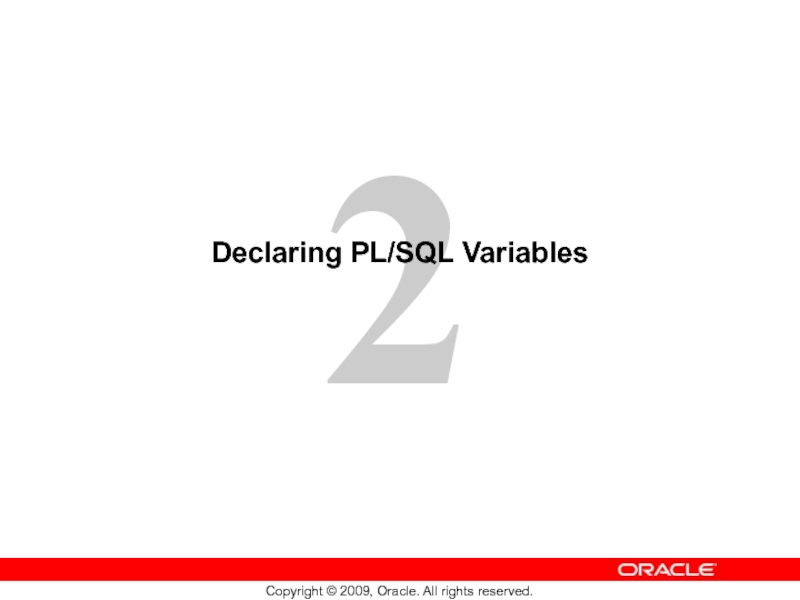
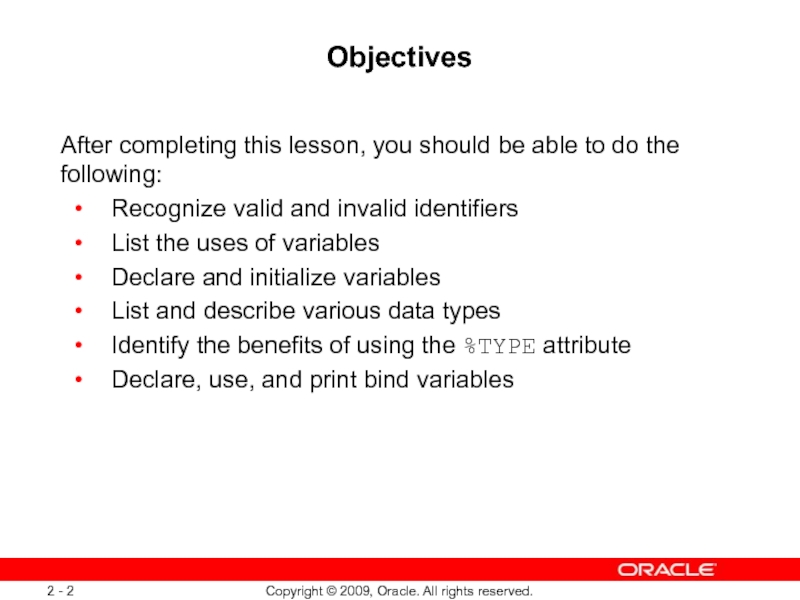
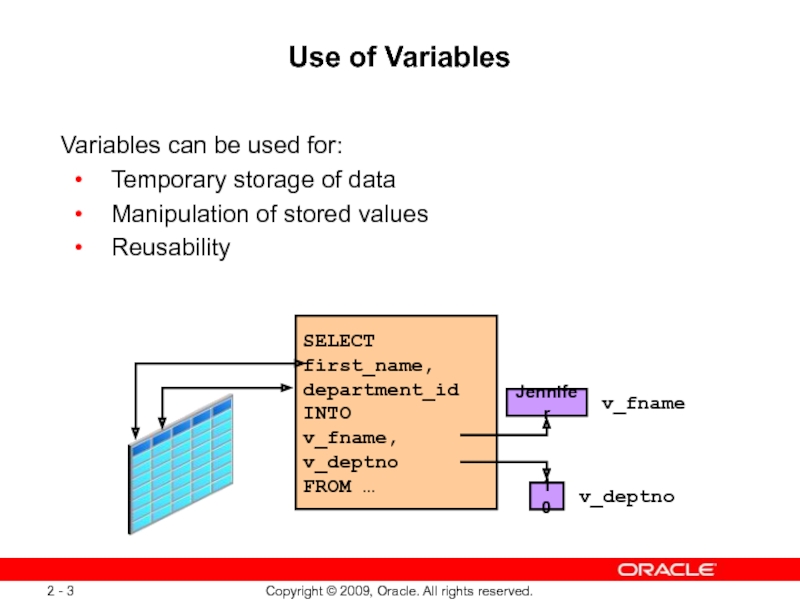
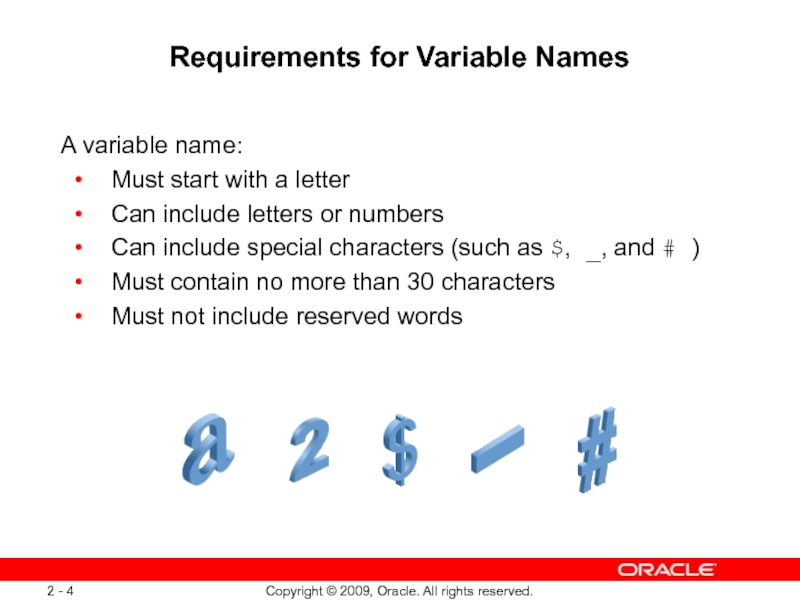
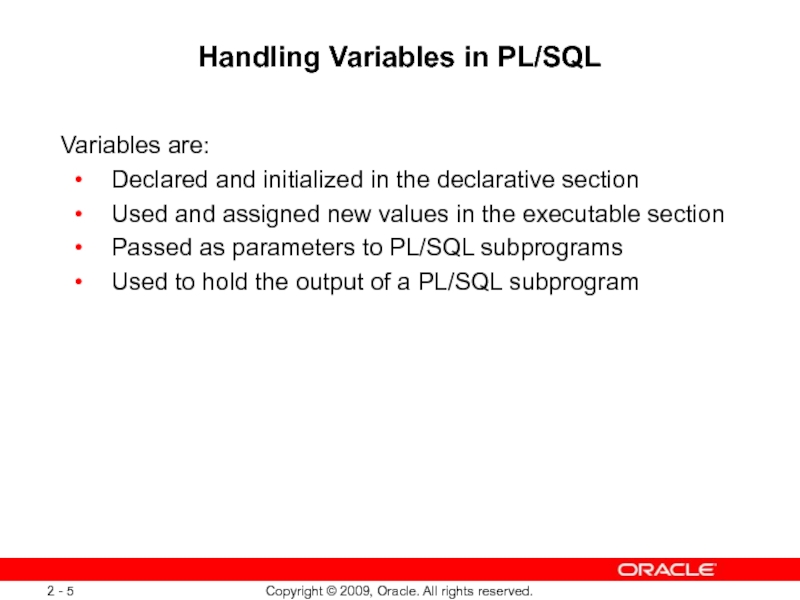
![Declaring and Initializing PL/SQL VariablesSyntax:Examples:identifier [CONSTANT] datatype [NOT NULL] [:= | DEFAULT expr];DECLARE v_hiredate DATE; v_deptno NUMBER(2)](/img/tmb/4/330209/6bed09ee62d89d38feeee59e20c32fa6-800x.jpg)
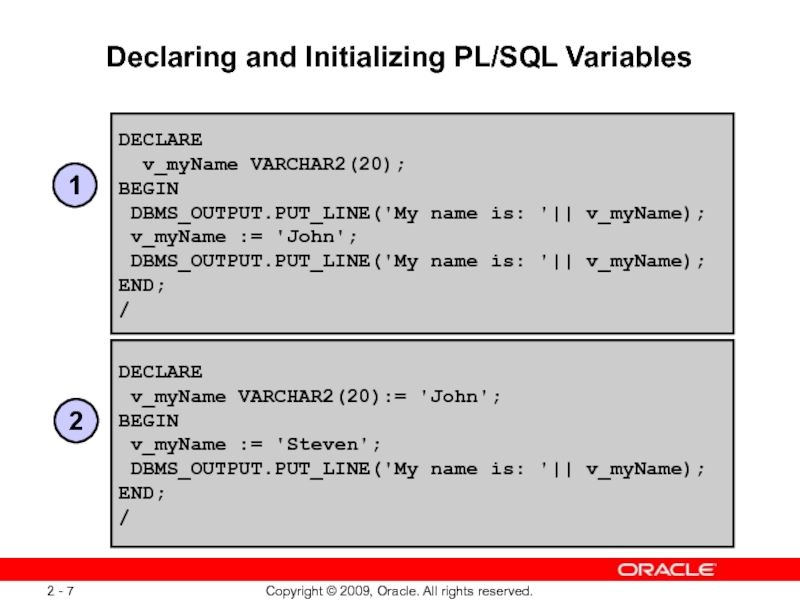
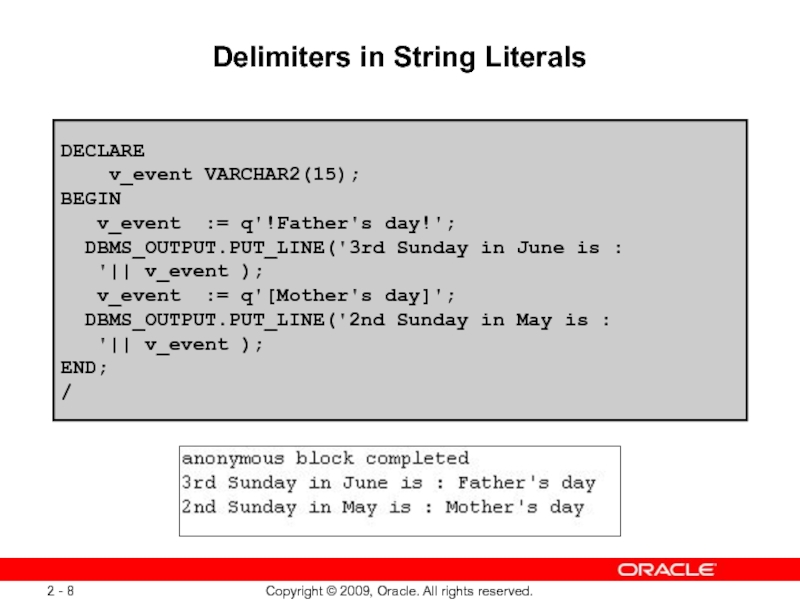
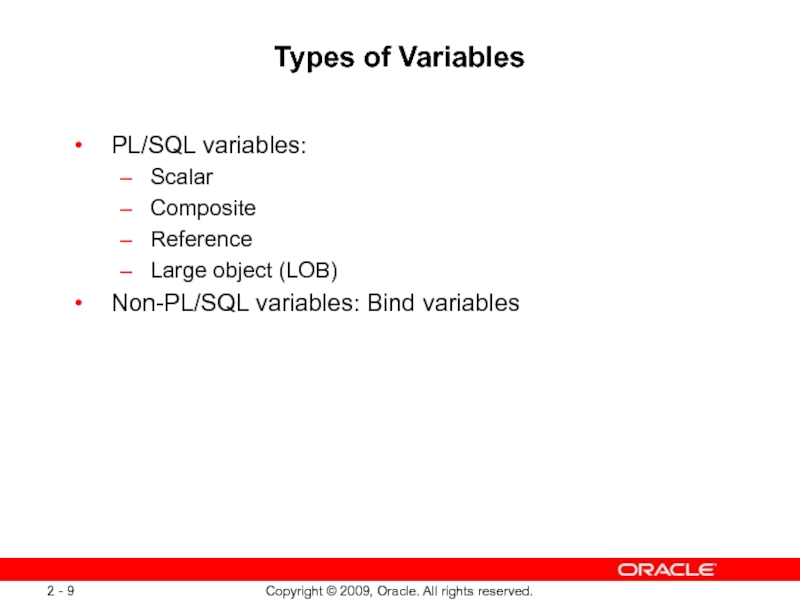
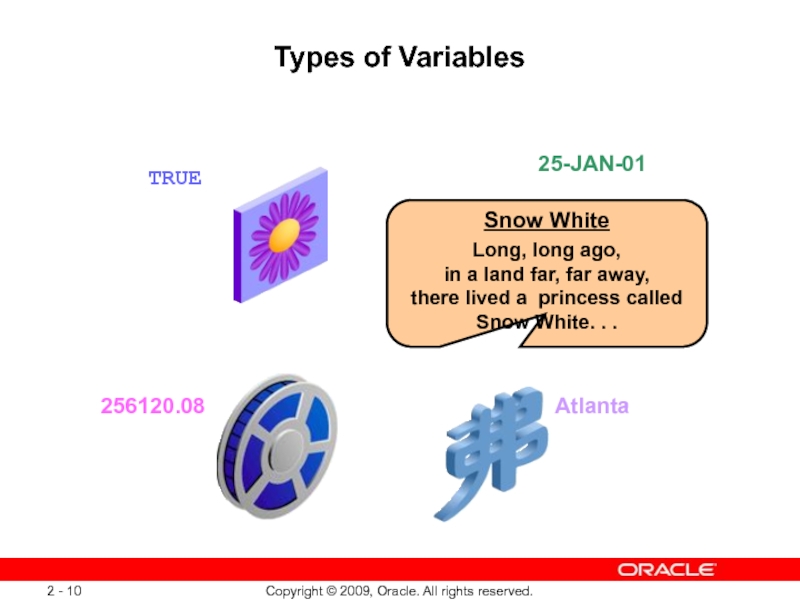
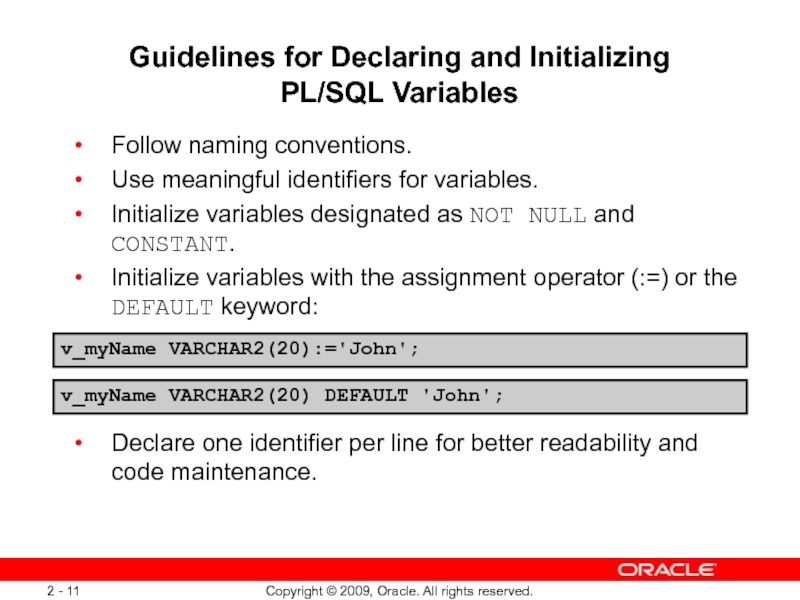
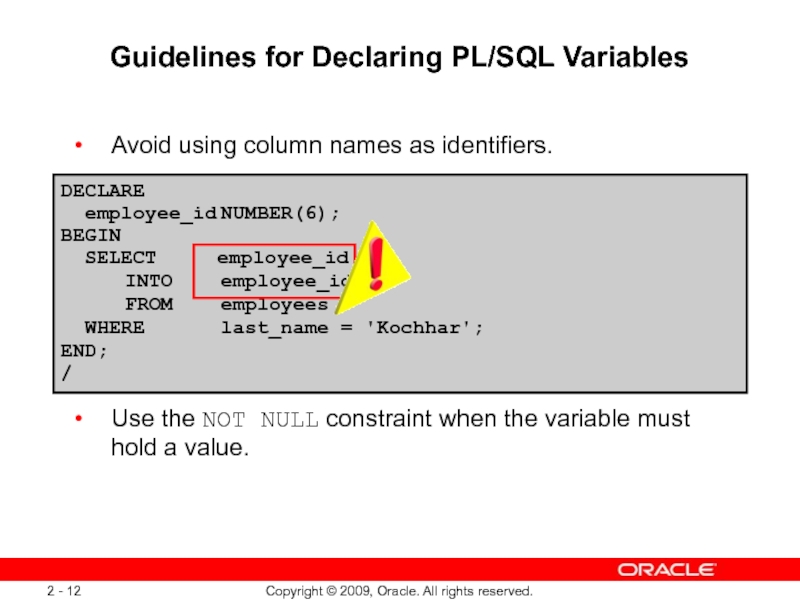
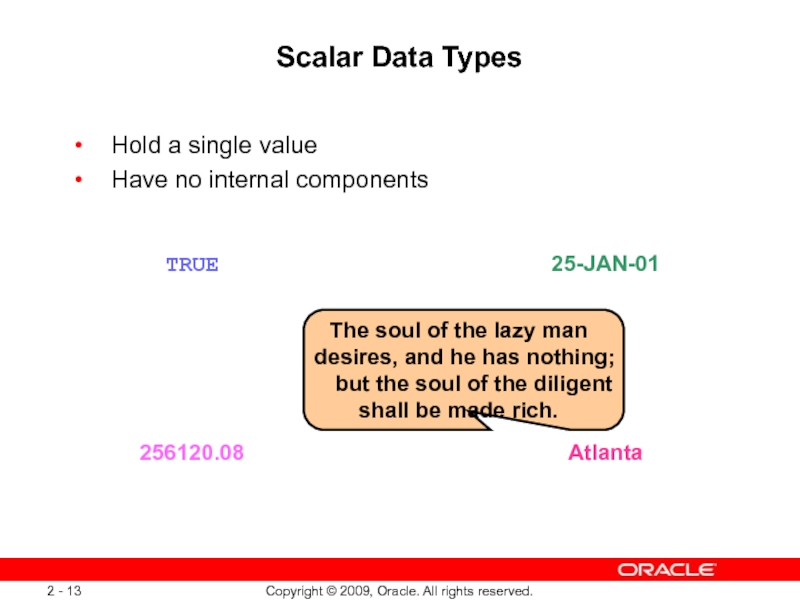
![Base Scalar Data TypesCHAR [(maximum_length)]VARCHAR2 (maximum_length)NUMBER [(precision, scale)]BINARY_INTEGERPLS_INTEGERBOOLEANBINARY_FLOATBINARY_DOUBLE](/img/tmb/4/330209/fa45787c1334cda88d7cdc07ef641e0f-800x.jpg)
